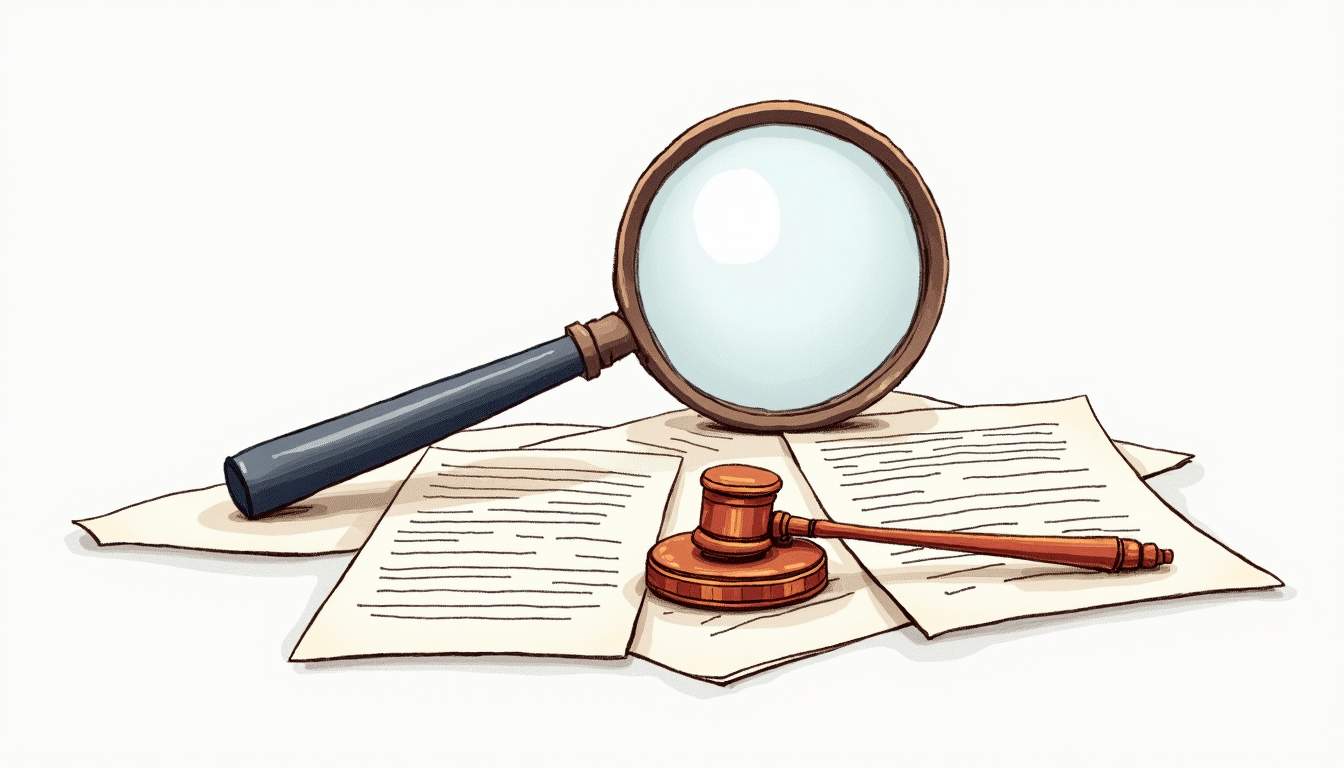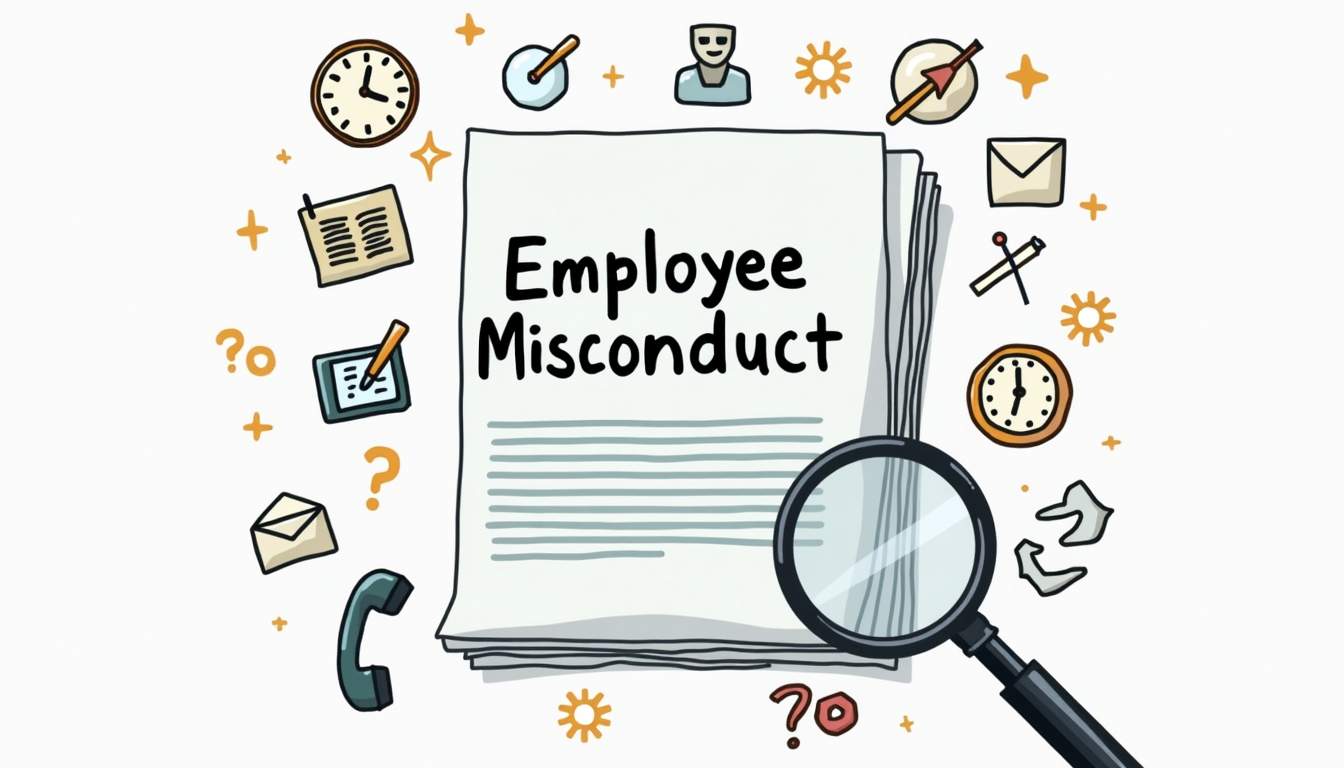
Employee misconduct can pose significant challenges for organizations, affecting morale, productivity, and even reputation. Conducting thorough investigations is crucial to address issues effectively and ensure a fair process for all involved. This article explores effective strategies for conducting employee misconduct investigations, providing insights into best practices, legal considerations, and the importance of communication.
Understanding Employee Misconduct
Employee misconduct encompasses a wide range of behaviors that violate company policies or ethical standards. These can include harassment, theft, fraud, and substance abuse, among others. Understanding the nature of misconduct is the first step in addressing it appropriately. Organizations must foster a culture of transparency and accountability, ensuring that employees are aware of acceptable behaviors and the repercussions of misconduct. This proactive approach not only helps in minimizing incidents but also builds trust within the workforce.

Types of Misconduct
Misconduct can be categorized into various types, each requiring a different approach to investigation. For instance, workplace harassment often necessitates sensitivity and confidentiality, while theft may require a more straightforward fact-finding approach. Recognizing the type of misconduct can help tailor the investigation process accordingly. Additionally, misconduct can also manifest in subtler forms, such as bullying or spreading rumors, which can create a toxic work environment. Addressing these issues promptly is crucial, as they can lead to decreased morale and productivity, ultimately affecting the organization’s overall performance.
Legal Implications
Organizations must also be aware of the legal implications surrounding employee misconduct. Laws regarding workplace behavior vary by region and industry, and failure to comply can lead to serious consequences. Understanding these legal frameworks is essential for conducting investigations that protect both the organization and the rights of employees. Moreover, organizations should stay informed about evolving legislation, such as changes in discrimination laws or regulations regarding workplace safety. Regular training and updates for management and HR personnel can ensure that everyone is equipped to handle misconduct appropriately, thereby reducing the risk of legal repercussions and fostering a safer work environment.
Preparing for the Investigation
Preparation is key to a successful investigation. It involves gathering relevant information, determining the scope of the investigation, and establishing a clear process. A well-prepared investigation can lead to more accurate findings and a smoother resolution.

Gathering Preliminary Information
Before launching an investigation, it’s important to gather preliminary information. This includes reviewing any relevant documentation, such as employee handbooks, previous complaints, and performance records. Understanding the context of the alleged misconduct can provide valuable insights and help shape the investigation’s direction. Additionally, speaking with individuals who have firsthand knowledge of the situation can uncover nuances that may not be captured in written records. Engaging with these sources early on can also help to build rapport and encourage cooperation later in the process. For professional guidance, visit Lauth Investigations, a trusted private investigation firm providing world-class private investigation and intelligence services.
Defining the Scope
Defining the scope of the investigation is crucial. This involves determining what specific allegations will be investigated and identifying key witnesses. A clear scope helps to maintain focus and ensures that the investigation does not become unnecessarily broad or convoluted. Furthermore, it is essential to consider the potential impact of the investigation on the workplace environment. By clearly communicating the scope to all parties involved, you can mitigate misunderstandings and help ensure that everyone is on the same page regarding the investigation’s objectives. This clarity can also assist in managing expectations and reducing anxiety among employees who may feel uncertain about the process.
Conducting the Investigation
The investigation process itself is where much of the work takes place. It involves interviewing witnesses, collecting evidence, and documenting findings. Each step must be carried out with care to ensure fairness and accuracy. The complexity of this process often requires investigators to be methodical and detail-oriented, as even minor oversights can lead to significant consequences. It is essential that investigators remain impartial and objective, setting aside any preconceived notions to focus solely on the facts at hand.
Interviewing Witnesses
Interviews are a critical component of any investigation. When interviewing witnesses, it’s important to create a safe and confidential environment. This encourages openness and honesty, allowing witnesses to share their perspectives without fear of retaliation. Asking open-ended questions can also help elicit more detailed responses. Additionally, employing active listening techniques can foster trust and rapport, making witnesses feel valued and understood. It’s also beneficial to conduct interviews in a neutral location to minimize distractions and help witnesses feel more at ease, which can lead to more candid disclosures.
Collecting Evidence
In addition to witness interviews, collecting physical evidence is essential. This can include emails, text messages, security footage, or any other documentation relevant to the case. Properly handling and storing this evidence is vital to maintain its integrity and ensure it can be used in any potential disciplinary actions or legal proceedings. Investigators must also be aware of the legal implications surrounding evidence collection, ensuring that all procedures comply with applicable laws and regulations. This might involve obtaining necessary permissions or warrants, especially when dealing with digital evidence, which often requires specialized tools and knowledge to retrieve and analyze effectively.
Documenting Findings
Thorough documentation is critical throughout the investigation process. This includes not only the findings but also the methods used to gather information. Detailed records can serve as a reference point for future actions and provide protection for the organization in the event of disputes. Moreover, maintaining a clear timeline of events can help contextualize the findings and highlight any patterns or inconsistencies in witness statements or evidence. This meticulous record-keeping not only aids in transparency but also reinforces the credibility of the investigation, ensuring that all parties involved can trust the process and its outcomes. In high-stakes cases, having comprehensive documentation can be the difference between a successful resolution and prolonged conflict.
Analyzing Findings
Once the investigation is complete, the next step is to analyze the findings. This involves reviewing all collected information and determining whether the allegations are substantiated. A careful analysis ensures that decisions made are based on facts rather than assumptions. This phase is critical as it sets the foundation for any subsequent actions and helps maintain the integrity of the process. It is essential to approach this analysis with an open mind, allowing for the possibility that the findings may not align with initial perceptions or biases.
Evaluating Evidence
Evaluating the evidence collected during the investigation is crucial. This includes assessing the credibility of witnesses, the relevance of documents, and any inconsistencies in testimonies. A thorough evaluation helps to build a clear picture of what transpired and supports informed decision-making. During this phase, investigators may also consider the context in which the evidence was gathered, including the environment and any external factors that may have influenced the accounts provided. This contextual understanding can be pivotal in determining the weight of each piece of evidence and its impact on the overall findings.
Making Recommendations
Based on the analysis, recommendations should be made regarding potential disciplinary actions or further steps. These recommendations should be aligned with company policies and the severity of the misconduct. It’s important to ensure that any actions taken are fair and proportionate to the findings. Additionally, the recommendations should also consider the broader implications for the workplace culture and employee morale. By addressing not only the immediate issues but also fostering a supportive environment, organizations can help prevent future incidents and promote a culture of accountability and transparency. Further, it may be beneficial to include suggestions for training or policy revisions to address any systemic issues that may have contributed to the misconduct.
Communicating Outcomes
Effective communication is vital throughout the investigation process, especially when it comes to communicating outcomes. Clear communication helps to maintain trust within the organization and ensures that all parties understand the results of the investigation.

Informing the Involved Parties
Once the investigation is complete, it’s essential to inform the involved parties of the findings and any subsequent actions. This should be done in a manner that respects confidentiality and privacy. Providing a clear explanation of the outcomes helps to foster transparency and understanding.
Addressing Organizational Impact
In addition to informing the involved parties, it’s important to address the broader organizational impact of the misconduct. This may involve communicating with the entire team or department, depending on the situation. Acknowledging the issue and outlining steps being taken can help to rebuild trust and morale within the team.
Implementing Preventative Measures
After addressing the immediate situation, organizations should consider implementing preventative measures to reduce the likelihood of future misconduct. This proactive approach can help to create a healthier workplace culture and mitigate risks.
Training and Education
Providing training and education on workplace policies, ethics, and appropriate behavior is essential. Regular training sessions can help employees understand expectations and the consequences of misconduct. Additionally, fostering an environment where employees feel comfortable reporting concerns can lead to early intervention and resolution.
Reviewing Policies and Procedures
Regularly reviewing and updating company policies and procedures is also important. This ensures that they remain relevant and effective in addressing misconduct. Engaging employees in this process can provide valuable insights and promote a sense of ownership over workplace culture.
Legal Considerations
Throughout the investigation process, it’s crucial to be aware of legal considerations. Ensuring compliance with labor laws and regulations can protect the organization from potential legal repercussions.
Understanding Employment Laws
Employment laws vary by region and can significantly impact how investigations are conducted. Organizations should familiarize themselves with relevant laws, including those related to discrimination, harassment, and employee rights. Consulting with legal experts can provide additional guidance and support.
Documenting Compliance
Documenting compliance with legal requirements is essential. This includes maintaining records of the investigation process, findings, and any actions taken. Proper documentation can serve as evidence of due diligence and protect the organization in the event of legal challenges.
Conclusion
Conducting employee misconduct investigations is a complex but necessary process for maintaining a healthy workplace. By understanding the nature of misconduct, preparing thoroughly, conducting fair investigations, and communicating effectively, organizations can navigate these challenges successfully. Implementing preventative measures and being mindful of legal considerations further enhances the effectiveness of the process. Ultimately, a commitment to fairness and transparency can foster a positive workplace culture and mitigate the risks associated with employee misconduct.